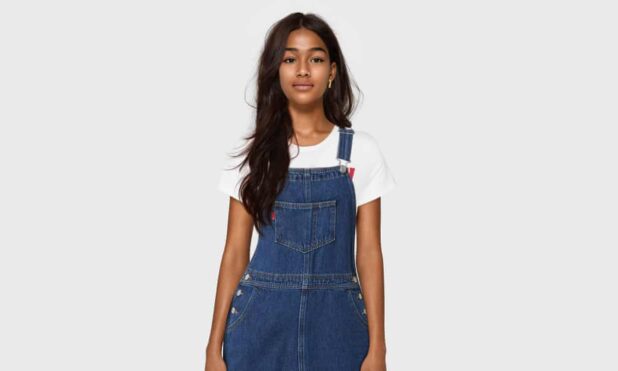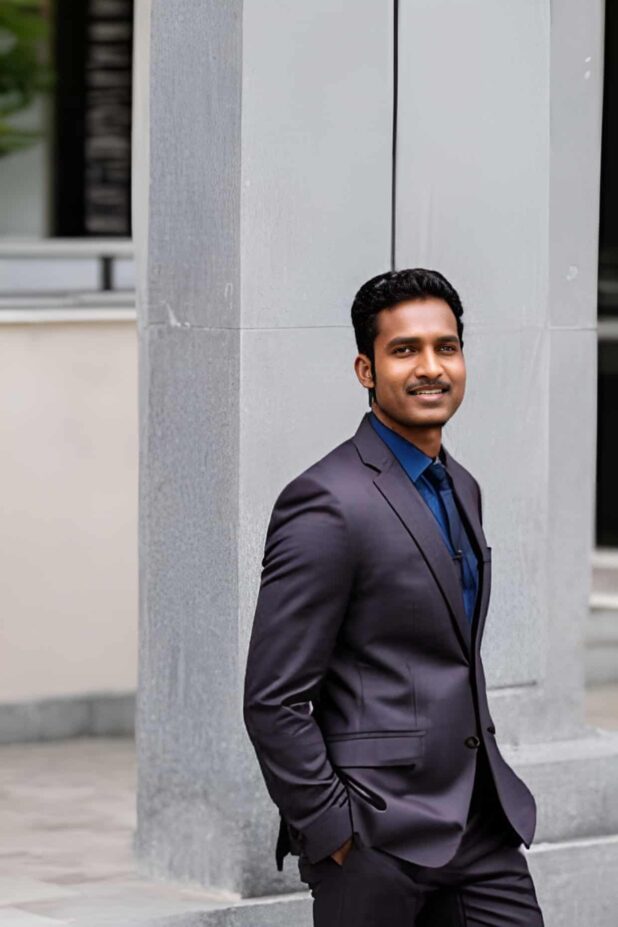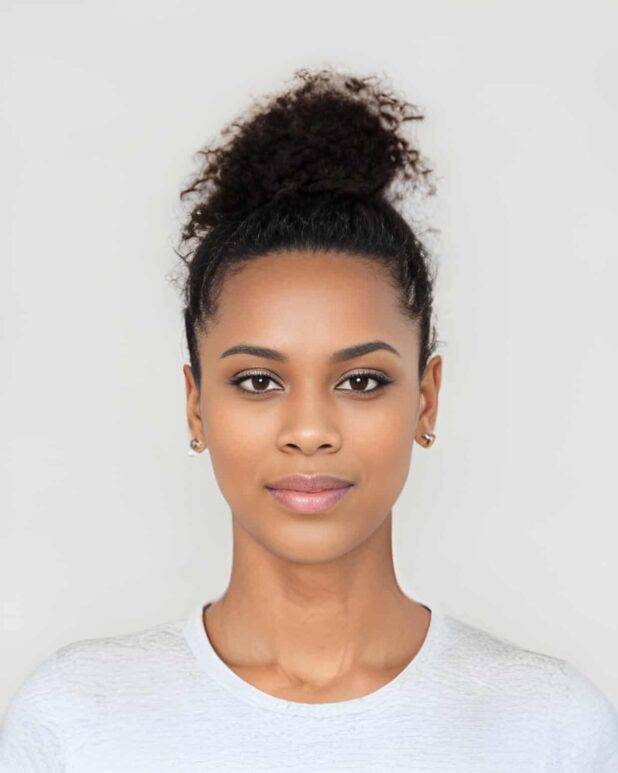Levi’s new AI-generated model
If you look at any clothing ad, it’s all diversity and it’s really just repulsive.
It’s reasonable to shake it up a little bit with robots, and try to make the colors of the “fudge rainbow” look a bit more pleasing.
The star of Levi’s new campaign looks like any other model . Her tousled hair hangs over her shouldersas she gazes into the camera with that far-off high-fashion stare. But look closer, and something starts to seem a little off. The shadow between her chin and neck looks muddled, like a bad attempt at using FaceTune’s eraser effect to hide a double chin. Her French manicured fingernails appear scrubbed clean and uniform in a creepy real doll kind of way.
The model is AI-generated, a digital rendering of a human being that will start appearing on Levi’s e-commerce website later this year. The brand teamed with LaLaLand.ai, a digital studio that makes customized AI models for companies like Calvin Klein and Tommy Hilfiger, to dream up this avatar.
Amy Gershkoff Bolles, Levi’s global head of digital and emerging technology strategy, announced the model’s debut at a Business of Fashion event in March. AI models will not completely replace the humans, she said, but will serve as a “supplement” intended to aid in the brand’s representation of various sizes, skin tones and ages.
“When we say supplement, we mean the AI-generated models can be used in conjunction with human models to potentially expand the number of models per product,” a Levi’s spokesperson said. “We are excited about a world where consumers can see more models on our site, potentially reflecting any combination of body type, age, size, race and ethnicity, enabling us to create a more personal and inclusive shopping experience.”
Michael Musandu, the founder of LaLaLand.ai, created the software in part because he struggled to find models who look like him. He was born in Zimbabwe, raised in South Africa, and moved to the Netherlands to study computer science. “Any good technologist, instead of complaining about a problem, will build a future where you could actually have this representation,” Musandu said.
What about simply hiring a diverse cast of models? Musandu said that LaLaLand.ai is not meant to “replace” models, but allow brands to afford showing off different clothes on as many bodies as possible.
“It is not feasible for brands to shoot nine models for every single product they sell, because they’re not just hiring models, they’re hiring photographers, hair stylists and makeup artists for those models.” AI-generated images don’t need glam squads, so brands can cut costs they would spend on set by using fake avatars.
A spokesperson for Levi’s added: “The models Levi’s hires are already diverse and this will continue to be a priority for us. Over the past year, we’ve been focused on ensuring that those working on the content both in front and behind the camera are reflective of our broad consumer base.”
Yet the diversity that AI can provide is always going to be virtual – a computer-generated sense of inclusivity. Are brands who generate, for example, black models for pieces where they only photographed a white human model engaging in a kind of digital blackface?
This is not a new question. There are already “digital influencers” like Lil Miquela and Shudu, fake avatars with millions of followers on social media. They model Prada, Dior, and Gucci clothing with the idea that their (human) audience will purchase the pieces. Neither model is white, but both have at least one white creator (Shudu was created by British fashion photographer Cameron-James Wilson and Miquela by Trevor McFedries and Sara Decou).
Criticism of Levi’s for casting AI models instead of real ones echoes the wave of response Lil Miquela got when she was first launched in 2016, or when Shudu made her debut two years later. The New Yorker’s Lauren Michele Jackson called Shudu “a white man’s digital projection of real Black womanhood”.
Lil Miquela’s creators also filled her fake life with “events” to try and give her personality. Calvin Klein apologized for a Pride ad that showed Lil Miquela kissing the real model Bella Hadid. A few months later, Lil Miquela came out with a story of experiencing sexual assault in the back of a ride-share, and followers accused her creators of making up a traumatic event for clout.
Unlike their mortal counterparts, these models also never age. Miquela, a “19-year-old Robot living in LA”, is forever 19 – making her a hot commodity in a youth-obsessed industry.
Deep Agency, another Netherlands-based AI company, made headlines this month after debuting its own “AI modeling agency”. The service, which costs $29 a month, brands itself as a way for creators to “say goodbye to traditional photoshoots”. Users type in description for what they want their photo to look like, and receive “high-quality” photos of fake models in return.
Paid subscribers of the service gain access to 12 models of various races, though all appear to be smaller-bodied and in their 20s and 30s. Users browse through the site’s catalog of existing images, which include photos of models engaging in activities like reading books or giving the camera a peace sign. Those photos serve as the inspiration for the final result.
In a photo rendered by the Guardian, one model named “Chai” had an unnervingly plastic-looking face and extra-long, slender fingers that belonged in a horror film. Another, “Caitlin”, had a concerning amount of veins popping out from under the skin of her neck. A male model, “Airik”, seemed incredibly uncomfortable and stick-straight as he posed in front of a drab gray building.
How long before these models are taking away jobs from real people? Sara Ziff, founder of the advocacy group The Model Alliance, is concerned, “capitalizing on someone else’s identity to the exclusion of hiring people who are actually Black could be compared to Blackface”, Ziff said.
Robot blackface?!?
That’s funny. I never thought of that.
AI-generated model “Airik”
AI-generated model “Caitlin”
AI-generated model “Chai”






